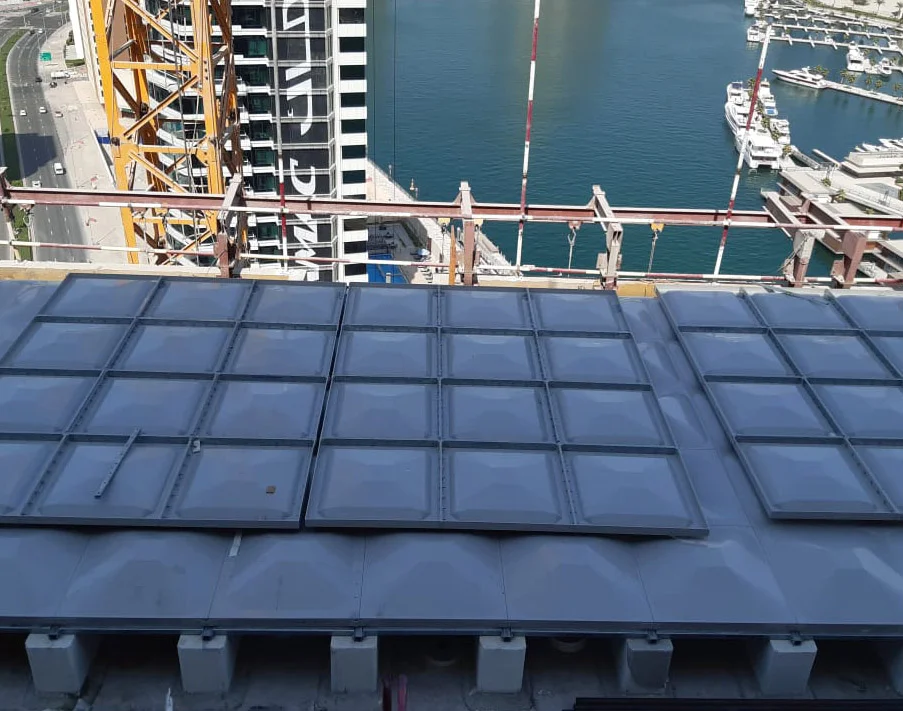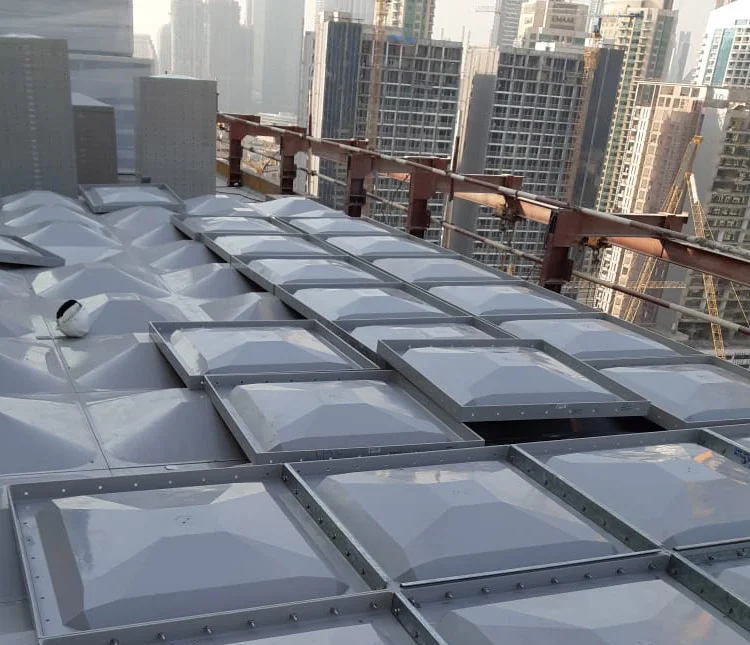FRP water tanks—short for Fiberglass Reinforced Plastic water tanks—have become one of the most reliable and advanced solutions for liquid storage in industries, municipalities, and even residential applications. Their unique combination of lightweight design, structural strength, and corrosion resistance makes them a preferred choice over conventional materials such as steel or concrete. This article explores the key reasons to choose FRP water tanks, the engineering principles behind their performance, and the industries that benefit from them.
An FRP water tank is a storage vessel manufactured using high-strength fiberglass reinforcements embedded in a polymer resin matrix. This composite material offers an exceptional strength-to-weight ratio while providing superior resistance to corrosion, UV degradation, and chemical attack. Unlike metal tanks, which can rust over time, or concrete tanks, which are prone to cracking, FRP tanks maintain their integrity over decades of use.

One of the main reasons to choose a fiberglass water tank is its inherent resistance to corrosion. The resin matrix in FRP creates a non-permeable barrier that prevents water, chemicals, or saline environments from degrading the tank’s structure. This makes them ideal for coastal installations, chemical plants, and potable water storage where metal tanks would require costly coatings or frequent replacements.
FRP tanks are significantly lighter than steel or concrete tanks while offering comparable, or even superior, structural strength. This low weight allows for easier transportation, reduced installation costs, and the ability to mount tanks in locations where heavy traditional tanks would be impractical. The high tensile strength of fiberglass reinforcement ensures that the tank can withstand internal water pressure and external loads without deformation.
With proper manufacturing and installation, FRP water tanks can have a service life of more than 20–30 years. The material’s durability minimizes the need for frequent repairs or recoating, lowering lifetime ownership costs. Additionally, FRP surfaces are smooth and non-porous, which reduces algae growth and sediment build-up inside the tank, making maintenance easier and less frequent.
Fiberglass water tanks can be manufactured in a wide range of shapes, sizes, and orientations—vertical, horizontal, cylindrical, rectangular—allowing engineers to tailor the tank to the available space and intended application. Advanced fabrication techniques such as filament winding and hand lay-up allow for custom reinforcement patterns to handle specific load conditions.
FRP tanks are designed to perform reliably in extreme climates. The composite structure can incorporate UV inhibitors and thermal insulation layers to protect stored water from temperature fluctuations and sun exposure. This is particularly beneficial for outdoor installations in hot or cold regions.

Thanks to their performance benefits, FRP water tanks are widely used in:
Compared to steel, FRP water tanks eliminate the need for rust prevention coatings, avoid galvanic corrosion, and weigh less for easier installation. Compared to concrete, they are not prone to cracking from thermal expansion, seismic activity, or freeze-thaw cycles. Moreover, fiberglass tanks can be fabricated in modular sections for easy assembly on-site, especially in locations with limited access.
Modern FRP tanks are produced using food-grade resins for potable water applications and are compliant with NSF/ANSI standards. Their production also has a lower environmental footprint compared to mining and smelting metals. Additionally, their long service life reduces the frequency of tank replacement, thereby minimizing waste.
The unique advantages of FRP water tanks—including corrosion resistance, high strength-to-weight ratio, long service life, and design flexibility—make them an ideal choice for a wide range of liquid storage needs. Whether for municipal, industrial, agricultural, or marine applications, fiberglass tanks offer a proven solution that delivers both performance and cost efficiency over the long term.
Choosing fiberglass means investing in durability, safety, and innovation. For organizations seeking to modernize their water storage infrastructure, FRP water tanks represent not just an alternative, but an upgrade from traditional materials.
Experience the brand Trusted by Renowned Companies across the GLOBE.

Pipeco stands at the forefront of the market, recognized as a premier manufacturer, supplier, and exporter specializing in top-tier GRP water tanks, stainless steel water tanks, and SMC manhole covers, FRP Water Tank, Fiberglass Tank, SMC Water Tank committed to delivering unparalleled quality and excellence.